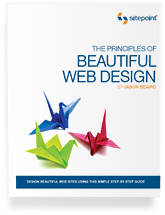UMS Design Panel Show Notes
Our Participants:
 Jason Beaird @jasongraphix
Jason Beaird @jasongraphix
jasongraphix.com
Author of the Sitepoint book “The Principles of Beautiful Web Design”
Currently working with Cyberwoven
Ken Seals @kenseals
kennethseals.com
Currently working with Cyberwoven
Jay Barry @petridisc | @unmatchedstyle
unmatchedstyle.com
Currently working with Period Three
Gene Crawford @gene_crawford | @unmatchedstyle
unmatchedstyle.com
Currently working with Period Three
Linkage:
Post by Kyle Weems on CSSquirrel “Cuddling with Cufon”
By “great alternative”, I mean that it “lights sIFR on fire, kicks it into an open sewer, and laughs maniacally as sIFR rolls around in stinky, burning pain.”
Yes, it’s that much better. And if you don’t agree, I’ll punch you.
Our final take on sIFR vs. Cufon = Cufon wins!
Mark Pilgrim’s F***K the foundaries post.
Typography.com & @font-face (Mozilla has a post about font-face too.)
Museo font family by Jos Buivenga.
Final Tips:
Jason Beaird: Use all the easily available resources on the web to help you learn, like:
css-tricks.com
nettuts.com
Follow some top designers on twitter:
http://vandelaydesign.com/blog/social-media/designers-on-twitter/
http://thinkvitamin.com/dev/40-web-developers-to-follow-on-twitter/
Jay Barry: Don’t get complacent, always strive to learn new things and push yourself.
Ken Seals: “View Source” if you find there’s something you think is cool or you like, view source on it and try to reverse engineer it to an extent to get some inspiration.
Parting shot:
IE6 MUST DIE!!!




0 Comments